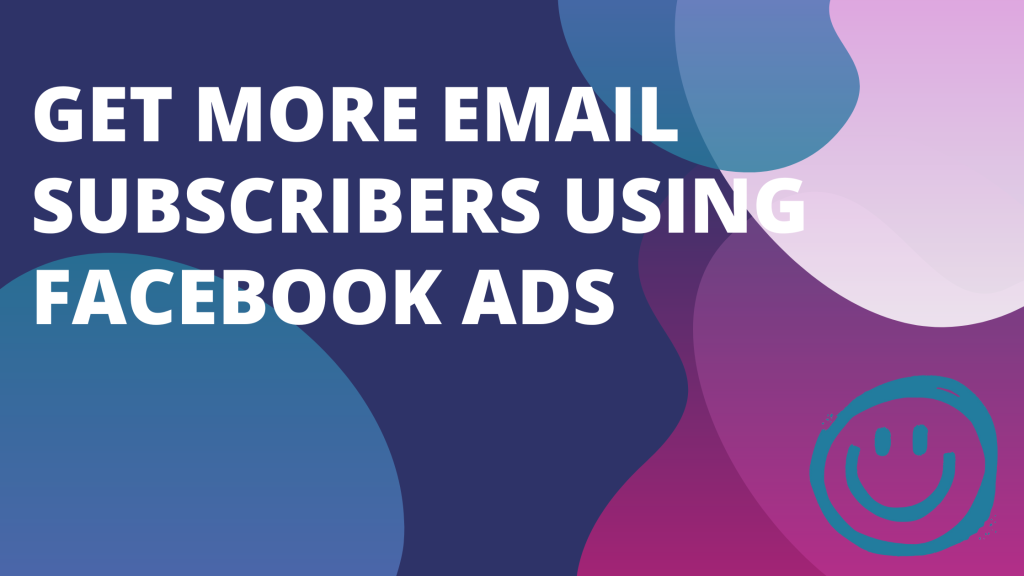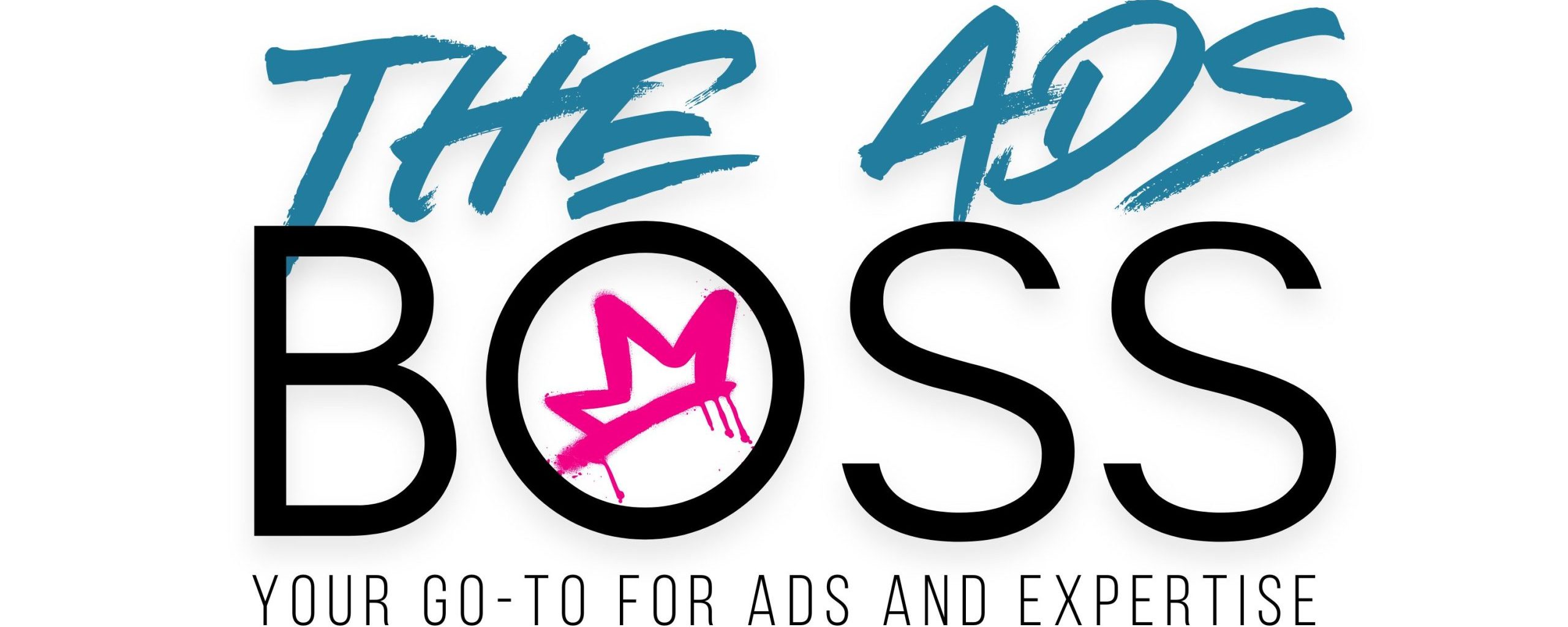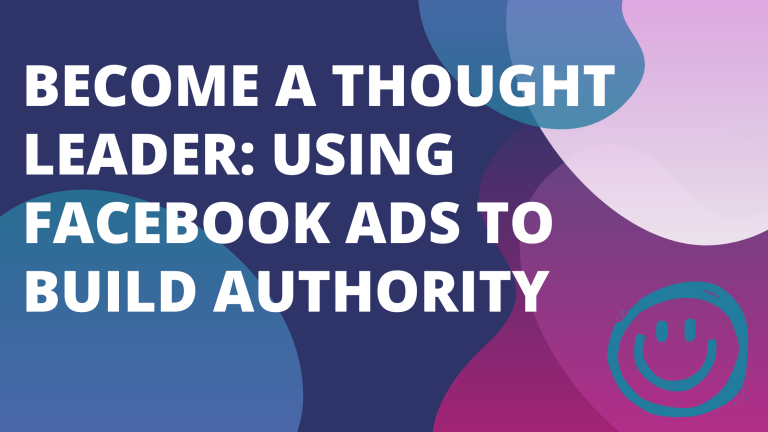How to Effectively Promote Your Cause with Facebook Ads

Facebook ads have become one of the most effective tools for promoting a cause. With over two billion users and advanced targeting options, the platform allows you to reach the right people quickly. Whether you’re raising awareness or driving donations, Facebook ads can help you get results without a massive budget. In this post, you’ll learn exactly how to create campaigns that amplify your cause and connect with supporters.
Understanding Facebook Ads
Facebook ads are a powerful way to promote your cause, connecting you with a wide and targeted audience. With customizable formats and clear campaign objectives, you can create tailored ads that resonate with potential supporters. Whether you aim to raise awareness or increase donations, understanding the tools available is the first step to maximizing your ad’s impact.

Photo by Pixabay
Types of Facebook Ads
Facebook offers a variety of ad formats to suit your message and goals. Choosing the right format ensures your campaign stands out and delivers the results you want. Here are the most popular types of Facebook ads:
- Image Ads: Simple and straightforward, these ads use a single image and accompanying text. They’re perfect for catching attention quickly and delivering a concise message. For example, an image of volunteers at work can instantly connect with users emotionally.
- Video Ads: Videos are engaging and allow you to tell a story. Whether it’s a 15-second clip or a longer narrative, video content can showcase your cause in action, helping viewers understand your message on a deeper level.
- Carousel Ads: These ads let you feature multiple images or videos in one post. They’re great for presenting different aspects of your cause, like highlighting specific programs, beneficiaries, or milestones.
- Stories Ads: Found in Facebook Stories, these full-screen ads are immersive and highly engaging. They’re ideal for making your cause feel personal and urgent, driving users to take immediate action.
Each of these formats caters to different audiences and content styles, so experiment to see what resonates most with your supporters.
Facebook Ads Objectives
Every successful Facebook ad campaign begins with a clear goal. Facebook provides several advertising objectives that help you align your campaign with your desired outcomes. Here are the key objectives and how they can help you promote your cause:
- Awareness: Perfect for making people aware of your cause. This objective focuses on reach and brand recognition, ensuring your ad reaches a wide audience. If you’re launching a new nonprofit initiative or campaign, this is a great starting point.
- Engagement: If you want people to interact with your content, choose the engagement objective. This includes likes, comments, shares, or event responses. It’s ideal for building an online community or promoting an event for your cause.
- Conversions: When your goal is to drive specific actions—such as donations, sign-ups, or volunteering—this objective guides users directly to your desired outcome. It’s a critical choice for measurable results.
By matching the right objective to your campaign’s goals, you create ads that not only look good but also perform effectively.
Understanding these ad types and objectives sets the foundation for creating campaigns that truly inspire people to take action for your cause. Let’s explore other elements of building successful Facebook ads in the next section.

Setting Up Your Facebook Ads Campaign
Setting up a Facebook Ads campaign is a structured process that helps you achieve your goals effectively. From account creation to budget management, each step is critical to ensuring your cause reaches the right people. Here’s how you can set up your campaign the right way.
Creating a Facebook Business Manager Account
To begin, you’ll need a Facebook Business Manager account. This platform centralizes all your ad management tools, making it simpler to oversee campaigns, assets, and collaborators.
- Sign Up for Business Manager: Go to business.facebook.com. Log in using your personal Facebook account or create one if you don’t already have one.
- Enter Business Details: Provide basic information such as your name, business name, and email.
- Add Your Facebook Page: If you have an existing Facebook Page for your cause, link it. You can also create a new page directly within Business Manager.
- Set Up Payment Details: Add a payment method to handle ad expenses.
Why is this step important? Business Manager allows you to professionally handle multiple campaigns, assign user roles, and securely manage your payment settings. Think of it as the control room for all your Facebook advertising efforts.

Photo by Pixabay
Defining Your Target Audience
Who do you want to see your ad? This question is key to your campaign’s success. Facebook’s targeting options make it simple to zero in on the right people.
Here’s how you can define your audience:
- Demographics: Pick attributes like age, gender, and location. For instance, if your cause supports children in underserved communities, focus on parents or educators within specific areas.
- Interests: Use hobbies or preferences to refine your audience. Are they interested in environmental activism? Animal welfare? Plug these interests into your targeting options.
- Behaviors: Target users based on their online activity, such as charitable giving or event attendance.
By narrowing your audience, you’ll spend money targeting people who are more likely to engage with your cause. Think of this as aiming an arrow directly at the bullseye instead of scattering shots in all directions.
Choosing the Right Ad Format
Your ad’s format must match the story you want to tell. Facebook offers a variety of formats, each serving different campaign purposes.
- Image Ads: Simple visuals are ideal for giving a clear and direct message about your cause.
- Video Ads: Perfect for storytelling, showcasing events, or explaining your mission with greater depth.
- Carousel Ads: Feature several images or videos in one ad. This is great for highlighting multiple programs or success stories.
- Story Ads: Immersive, full-screen ads that feel natural in users’ feeds. Use these to create urgency or drive instant clicks.
Match the format to your cause’s needs. For example, a single image ad may be enough for raising awareness, but a video ad could leave a powerful emotional impact when asking for donations.
Budgeting and Bidding Strategies
How much should you spend? Facebook Ads allow you to stay in control of your budget while maximizing results. Here’s how to manage your spending:
- Set a Daily or Lifetime Budget: Decide how much you’re willing to spend daily or across the entire campaign. It’s like setting a ceiling to avoid overspending.
- Choose a Bidding Strategy: Use options like “Lowest Cost” to let Facebook optimize for the most clicks or outcomes within your budget. Alternatively, opt for Manual Bidding if you’re ready to manage bids yourself.
- Monitor Ad Costs: Use Facebook Ads Manager to track expenses and performance. If one ad performs better than others, allocate more of your budget toward it.
Start small, monitor results, and scale up as you see what works. Remember, every dollar counts when promoting your cause, so careful budgeting equals better impact.
With these foundational steps, setting up your Facebook Ads campaign becomes a seamless process. Once you have the structure in place, you can focus on refining your ads for maximum efficiency.
Crafting Compelling Ad Copy and Visuals
When promoting your cause with Facebook ads, two key elements determine success: persuasive ad copy and engaging visuals. Words and images are your tools to make people feel something—and take action. Let’s break down how to master these.
Writing Effective Ad Copy
Ad copy is the soul of your message. It’s what convinces someone scrolling through their feed to stop and care. Great ad copy doesn’t happen by accident. Here’s how you can write text that converts:
- Be Clear and Concise
Aim for simplicity. Write as if you’re talking to a friend. Skip bulky sentences and focus on delivering your message within the first few words.- Example: “Help foster children find homes. Donate today—every dollar brings them closer to family.”
- Tap into Emotions
Use emotional triggers like empathy, hope, or urgency. People tend to act when they feel deeply connected to a cause.- Example: “Imagine losing everything but hope. Be the light someone needs—support our hurricane relief fund.”
- Add a Call to Action (CTA)
Don’t leave your audience wondering what to do next. Whether it’s donating, signing up, or sharing your post, ask them directly.- Examples:
- “Click below to learn more.”
- “Join us today—together, we make a difference!”
- Examples:
- Speak to Your Audience’s Values
Write for your specific audience. If your cause is about education, emphasize the lifelong impact of learning. Tailor your language so it feels personal. - Keep It at Eye Level
Avoid complex jargon or overly formal language. A Facebook ad isn’t a thesis paper—it’s a conversation.
Designing Eye-Catching Visuals
Your visuals are the first thing people notice. A stunning image or clean design can stop someone mid-scroll. Without good visuals, even the best copy won’t get much attention.
Best Practices for Visual Design
- Use High-Quality Images
Blurry, pixelated photos? Forget it. Your image speaks for your brand, so choose sharp, clear visuals that represent your cause authentically. - Stick to Facebook’s Recommended Sizes
Ensure your image or video fits perfectly. Poorly cropped or stretched visuals appear unprofessional. For typical ads, aim for 1080×1080 pixels. - Understand Color Psychology
Colors evoke emotions. Blues can express trust and calm, while red adds urgency and excitement. Pick colors that align with the tone of your message. - Keep the Design Uncluttered
Don’t pack too much into one graphic. A simple, bold image with clear text is far more effective than overwhelming details. - Consider Accessibility
Use fonts that are easy to read and avoid color combinations that lack contrast. Keep in mind that some users may be colorblind or visually impaired.

Photo by Miguel Á. Padriñán
Visual Content that Works
- Photos of People
Faces create connection. A photo of someone directly impacted by your cause, like a smiling child or a dedicated volunteer, can evoke an instant reaction. - Before and After Images
Show transformation. For example, a cleaned-up park compared to its former littered state gives viewers a clear message of impact. - Videos Tell Stories
Use short clips to highlight testimonials, events, or behind-the-scenes moments. Videos tend to hold attention longer than still images.
By combining emotion-driven copy with powerful visuals, your Facebook ads can leave a lasting impression. Each element supports the other—when you create harmony between the two, you give your cause a louder, clearer voice.
Measuring Success and Optimizing Campaigns
Running Facebook ads for your cause is one thing, but knowing if they’re actually working is another. Without tracking performance, you’re like a sailor navigating without a compass. To maximize the impact of your campaigns, it’s critical to measure success and fine-tune your efforts. Here’s how you can do it effectively.
Key Performance Indicators (KPIs)
To understand if your ads are hitting the mark, you need to track the right metrics—your Key Performance Indicators (KPIs). These KPIs give you clear insights into how people are interacting with your campaigns. So, what should you focus on?
- Reach: This tells you how many unique users saw your ad. A large reach means your message is being seen widely, which is great for awareness campaigns.
- Engagement: Engagement measures actions like likes, shares, and comments. Higher engagement usually indicates that your content is resonating with your audience.
- Click-Through Rate (CTR): CTR shows the percentage of users who clicked on your ad after seeing it. A strong CTR signals that your ad copy and visuals are compelling.
- Conversion Rate: This tracks the percentage of users who take the desired action, like donating or signing up. It’s the most direct measure of your campaign’s success.
Each KPI serves a different purpose depending on your campaign goals. If raising awareness is your priority, focus on reach and engagement. If driving action is key, hone in on CTR and conversion rate.

Photo by Lukas
Using Facebook Analytics Tools
Facebook offers built-in tools to monitor and evaluate your ad performance. These tools provide a bird’s-eye view of your campaigns, saving you from guesswork.
- Facebook Ads Manager: Ads Manager is your go-to platform for tracking KPIs. It breaks down data like reach, impressions, and results in an easy-to-read dashboard. You can also customize columns to prioritize the metrics that matter most.
- Facebook Page Insights: Dive into insights for your page to see how followers engage with your organic posts. These trends can guide your paid ad strategies.
- Facebook Pixel: Pixel is a small piece of code you install on your website. It helps track user actions, like completing a donation form or signing up for an event. With this data, you can optimize for conversions and retarget visitors who didn’t take action initially.
These tools are like having a magnifying glass over your campaigns. They provide clarity so you can pivot strategies, allocate budgets, or tweak messaging as needed.
A/B Testing for Optimization
Even the best campaigns can improve. That’s where A/B testing comes in. Think of it as a science experiment for your ads. By testing variations, you can identify what works and what doesn’t.
How to Conduct A/B Testing
- Choose One Variable: Focus on testing one element at a time. For example, compare two headlines, images, or call-to-actions (CTAs). This helps you pinpoint the cause of any changes in performance.
- Split Your Audience: Divide your audience into two random groups. Show each group a different version of your ad.
- Track the Results: Use Facebook Ads Manager to monitor performance metrics. Which version had a higher click-through rate? Which drove more conversions?
- Implement the Best Option: Once you know what resonates, apply it to your broader campaign.
Benefits of A/B Testing
- Boosts Engagement: Testing headlines, for example, can reveal which phrasing grabs attention.
- Improves ROI: Tweaking elements like visuals or CTAs can lead to higher conversions without increasing your budget.
- Minimizes Risk: Instead of guessing, A/B testing lets you make data-backed changes.
Imagine you’re fundraising for a wildlife conservation project. One group sees an ad with the headline, “Save Endangered Species Today!” while the other sees, *“Act Now to Protect Wildlife!” A/B testing reveals which version inspires more action.
By measuring KPIs, leveraging analytics tools, and refining through A/B testing, you take your Facebook ads to the next level. These strategies ensure that every dollar counts and your cause reaches its full potential.
Case Studies of Successful Cause Promotion
Facebook Ads have empowered organizations of all sizes to amplify their causes and make significant impacts. By looking at successful campaigns, we can find actionable strategies for promoting your own cause effectively.
Non-Profit Organization Campaigns
Non-profit organizations frequently turn to Facebook Ads to generate awareness, increase donations, and mobilize volunteers. Below are some inspiring examples of campaigns that achieved outstanding results.
- Charity: Water’s Donation Drive
Charity: Water uses Facebook Ads to fund clean water projects worldwide. They focus on video ads that tell emotionally compelling stories about communities without clean water. One standout campaign featured a carousel ad showcasing progress updates, such as wells funded and people helped. This transparency encouraged thousands of donations while building trust with supporters. - World Wildlife Fund’s (WWF) Earth Hour Campaign
The WWF used Facebook Ads to promote their Earth Hour initiative—a movement encouraging people to turn off lights for one hour to support the planet. The campaign used high-impact visuals of landmarks going dark, combined with clear CTAs asking supporters to join the movement. This resulted in millions of global participants and boosted WWF’s social media presence. - Save the Children’s Emergency Fundraising
During times of crisis, Save the Children runs targeted ads focusing on immediate needs, such as disaster relief or refugee support. One campaign showed images of children in extreme situations, paired with a simple, urgent headline: “Every dollar counts. Help now!” These ads led to substantial engagement and overwhelming responses from donors.

Photo by Tara Winstead
These examples underline the importance of emotional storytelling, transparency, and clear calls to action in Facebook Ad campaigns. Non-profits that connect visitor empathy with actionable steps tend to achieve remarkable results.
Grassroot Initiatives Utilizing Facebook Ads
Grassroots movements, though often limited in resources, have effectively used Facebook Ads to rally supporters and raise awareness. Let’s look at some examples of how community-led campaigns expanded their reach:
- #TeamTrees Fundraising Drive
Originated by YouTuber MrBeast and the Arbor Day Foundation, the #TeamTrees campaign set out to plant 20 million trees. Facebook Ads played a core role by targeting eco-conscious audiences with video reels of tree-planting efforts. The campaign achieved its goal within weeks, raising millions of dollars to help restore forests. - Local Food Pantry’s Fundraising Boost
A small-town food pantry used Facebook Ads to address rising food insecurity in their area during the pandemic. They ran image ads with simple text overlays, showing volunteers packing food boxes. By targeting nearby cities and towns, the campaign raised awareness and increased donation amounts substantially. - Community Park Cleanup Campaign
A grassroots environmental group launched Facebook Ads to encourage volunteer participation for cleaning a local park. Their campaign used before-and-after photos of park conditions, underscoring the need for community action. The ad’s audience targeting—which included local parents and nature enthusiasts—drew hundreds of volunteers and created long-term advocacy for cleaner public spaces.
These grassroots campaigns prove that passion and creativity can outshine budget limitations. By using Facebook’s targeting tools wisely and keeping the messaging authentic, even small campaigns can leave a meaningful impact.
Both non-profits and grassroots efforts show that Facebook Ads can do more than just spread the word—they can inspire action, drive donations, and build communities. These lessons can guide you when creating your own campaigns to promote your cause effectively.
Conclusion
Facebook ads offer a simple and effective way to promote your cause, no matter your budget or resources. With tools like advanced targeting, varied ad formats, and measurable objectives, the platform helps you connect with the right audience at the right time.
Start small, experiment with formats, and monitor your results to see what works best. Actionable metrics and A/B testing ensure continuous improvement and better outcomes.
Now’s the time to put your cause in front of a bigger audience. Open Facebook Ads Manager, create a campaign, and make an impact today. Someone out there is waiting to connect with your mission—let them find you.






